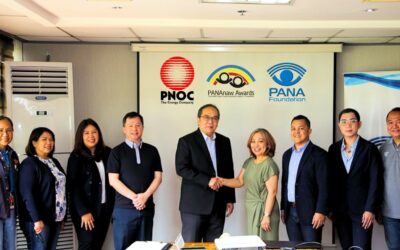arketing is a point in its history wherein its moving from simple advertising to total brand building. The days of making an advertisement for the sake of selling a product or service are slowly fading away and giving way to promotion of a complete brand experience—from the moment you inquire about it to the moment after you purchased it.
“If you think about it, advertising is just one-way communication but brand building in this era and generation, it encompasses everything—what does the brand stand for, what is the customer experience you want people to have, what is your customer service, what are the services you give them on top of the basic product,” says Anna Legarda-Locsin, the communications department head at Procter & Gamble Philippines and the incoming president of the Philippine Association of National Advertisers (PANA).
At 35 years old, Locsin is part of the microgeneration called Xennials, which is a cross between millennials and Gen Xers. Despite her age, she is at the helm of one of the country’s largest advertising industry institutions. She is among the new breed of advertising executives who have been elected to the PANA board last year and will be inducted today in a bid make the organization more relevant to the present times and make it more responsive to the needs of its current members.
Championing responsible brand building
Now that marketing is in the era of brand building, Locsin, along with the other officials and members of the PANA board of directors, are pushing forward with a new thrust for the organization: “Championing Responsible Brand Building.” All the organization’s activities and endeavors in the coming months will be anchored in this motto, in the hopes of helping their members and the industry raise the bar further when it comes to marketing.
“Raising the bar includes being responsible and brave enough to incorporate in their brand building materials, experiences, and communications the topics, insights, issues and relevant points that resonate with Filipino consumers, but at the same time, are giving them second thoughts because it’s too controversial for the brand,” Locsin says, when asked about what the tagline meant. “But when I say be courageous, I’m not saying do controversial marketing for sake of doing it. It still has to be anchored on consumer insights amidst relevant issues and topics..”
As an example of responsible brand building, Locsin mentioned how some brands have conducted marketing that are anchored on LGBT insights or split parenting, two topics that are often controversial for Filipinos. She noted how these brands hit the right notes by responsibly highlighting the good values and insights to be learned from such real and relevant stories.
“There are [many] ways to be courageous and responsible in speaking about what is happening in the Philippines now and showing what is true and relevant, while showing the right values behind it,” Locsin says.
Several established brands have already made huge strides in responsible marketing; But it doesn’t necessarily mean that responsible marketing is confined to established brands. Locsin challenges small and medium enterprises not to be hindered by their company size in pursuing courageous marketing.
“Brand builders can also raise the bar by learning from whatever tier of company size they are in. I think big companies have a whole lot of learning to do from very small, agile startups. When you are a big, traditional company, there have been many times that it’s hard to get out of your ways and systems because it has given you success. But the truth is, if you don’t get out of that, you risk obsolescence,” Locsin says. “Likewise, very small startups, agile new brands or entrepreneurs can also learn a lot from big companies, particularly from their structured thinking when it comes to longevity, so that they don’t fizzle out when the next big startup comes along.”
Apart from venturing into controversial but relevant topics in their brand communications, Locsin says, another thing that brands can be courageous about is embracing new technologies. She challenges companies to take smart and calculated risks in this endeavor, so they can reach more consumers and maintain, if not enlarge, their share of the market. She clarified though that embracing new technologies doesn’t necessarily mean going digital.
“You shouldn’t go digital just for the sake of going digital. There are many new platforms that companies are trying right now, of course largely enabled by digital, but it’s not just about going digital. Because marketing and brand building is a mix of having good and solid data and having a good sense of gut and intuition and being able to observe what consumers really do and what they value. [And] if you fail, fail fast and cheap and try again,” Locsin explains.
Transforming the PANA brand
PANA itself is also championing responsible brand building in a bid to bring the organization closer to its current members and attract more companies into their network. Locsin says that the PANA officers and board are instituting certain changes this year in the organization’s brand communications and activities to achieve this purpose.
Among the plans in store for this year is the launch of the PANA Edge, a digital publication wherein brand builders can share their knowledge about marketing and advertising to PANA members and the industry. It replaces the organization’s previous print magazine Ad Edge and will be filled with insightful articles, blogs, and op-eds about advertising. Members from the Philippines and overseas can view its contents and react to it in real time, making it an exciting two-way communication strategy for the PANA brand.
Moreover, the PANA board plans to bring its general membership meetings to places where the members are. Typically held in Makati, the GMMs are being planned to be held in other areas of Metro Manila so that member companies don’t have to travel far to engage with the organization. These GMMs will also feature a revitalized learning program, featuring local and global industry speakers who can help members improve on their brand building strategies. Master classes that brand builders can enroll in are also in the pipeline.
Lastly, the PANA board plans to introduce changes in the PANAta Marketing Effectiveness Awards, which recognizes companies for their successful brand building initiatives each year. One of the changes being planned is to add more recognitions for individual brand builders, aside from companies, so that they may become a source of inspiration and emulation among other brand builders.
“For sure we are continuing the good plans from last year and improving the parts that we didn’t really focus upon or didn’t do so well from last year. We don’t ever want to disrespect everything that’s gone on 60 years behind us. We have respect for all the wisdom, tenure, and experience of everybody who has touched PANA for the past 60 years, but we also want to make sure that people don’t think of PANA as an old institution that is not up to date with the times and cannot serve its members. We’re here to make sure that PANA is not obsolescent, that we remain the voice of the industry,” Locsin says.
She adds: “It’s going to be a great year of balance and contrasts, especially with the composition of the board this year a mix of millennials and people who have seen PANA in the past. We hope that people will clearly see the contrast and realize that PANA is keeping up with them, is relevant, has significantly improved and is aware of what they need.
[nggallery id=525]



